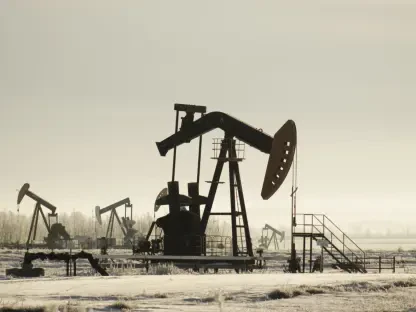The U.S. Department of Energy (DOE) has recently released a new report titled “Hydropower Supply Chain Gap Analysis,” which highlights significant gaps within the domestic hydropower supply chain and offers recommendations to address them. This comes at a crucial time when hydropower is playing an essential role in the nation’s energy mix, contributing approximately 27% of renewable electricity. Hydropower is pivotal to achieving the goal of a 100% clean electricity sector by 2035. The DOE’s report emphasizes the need for a robust domestic supply chain to support the expansion, upgrades, refurbishment, and relicensing of existing hydropower facilities. The overarching objective is to ensure the long-term viability and competitiveness of the U.S. hydropower sector. Below, we delve into the key themes identified in the report and explore the proposed recommendations to fortify this critical component of the renewable energy landscape.
Unpredictable Demand and Limited Domestic Supply
One of the main challenges identified by the DOE report is the unpredictable demand for materials and components necessary for hydropower systems. Hydropower systems are known for their long operational lifespans, often extending several decades. However, this longevity results in inconsistent and unpredictable demand signals, making it challenging for suppliers and manufacturers to plan and maintain a stable production pipeline. The report stresses the importance of establishing consistent demand signals through federal leadership and leveraging federal hydropower facilities to stabilize demand patterns.
In addition to unpredictable demand, the report highlights the scarcity of domestic suppliers for specific materials and components needed for hydropower systems. This shortage poses significant risks to the supply chain, making it vulnerable to disruptions and foreign competition. To mitigate these risks, the DOE recommends creating databases to better predict demand and compiling a directory of domestic suppliers. These steps aim to enhance the visibility of supply chain needs and capabilities, thereby fostering a more resilient and self-reliant domestic hydropower industry.
Regulatory Hurdles and Foreign Competition
Regulatory challenges are another critical area of concern outlined in the report. Federal contracting procedures and domestic content laws are seen as impediments to developing a vibrant domestic supply chain for hydropower. These regulations often lack flexibility, making it difficult for domestic suppliers to compete effectively. Streamlining regulatory processes and revising domestic content requirements could significantly bolster the U.S. hydropower supply chain by reducing barriers to entry and facilitating smoother operations for suppliers and manufacturers.
The hydropower industry also faces stiff competition from foreign entities, compounded by ineffective trade policies that hinder domestic growth. Foreign competitors often benefit from lower production costs and more favorable trade conditions, putting U.S. suppliers at a disadvantage. The report calls for more effective trade policies that protect and promote domestic suppliers, ensuring that they can compete on a level playing field. Enhancing trade policies would not only support the hydropower supply chain but also contribute to broader efforts to secure U.S. supply chains across various sectors.
Workforce Shortages and Development
Another significant challenge is the shortage of skilled workers in the hydropower sector. The industry has been affected by decades of offshoring and the retirement of experienced personnel, resulting in a substantial deficit of skilled workers. This shortage threatens the ability to maintain and expand hydropower infrastructure effectively. To address this issue, the DOE report emphasizes the need for robust workforce development initiatives. These initiatives include educational programs and hands-on experiences to build expertise in hydropower technologies and operations.
Expanding workforce development efforts is essential to ensuring that the U.S. hydropower sector has the talent needed to thrive. Educational institutions, industry stakeholders, and the government must collaborate to create training programs that equip workers with the necessary skills. Furthermore, the report suggests fostering collaboration with other low-carbon technology industries to ensure a steady demand for common materials and shared expertise. By investing in the workforce, the U.S. can build a strong foundation for the future of its hydropower sector, ensuring its continued growth and sustainability.
Federal Leadership and Industry Collaboration
Central to the DOE’s recommendations is the call for federal leadership to play a more proactive role in stabilizing the hydropower supply chain. Federal institutions can set consistent demand signals and provide the necessary support to domestic suppliers. Establishing a stable demand signal is crucial for mitigating the unpredictability associated with long-term hydropower projects. The DOE envisions leveraging federal hydropower facilities as a means to stabilize demand, providing a reliable source of requirements for materials and components.
Industry collaboration is equally important for addressing the challenges faced by the hydropower supply chain. The DOE report advocates for increased collaboration between the hydropower sector and other low-carbon technology industries. Such partnerships can help create synergies, ensuring a steady demand for common materials and fostering innovation. By working together, industry players can develop comprehensive solutions that benefit the entire renewable energy landscape. This collaborative approach is essential for overcoming the complex challenges that individual sectors might struggle to address on their own.
Conclusion
Regulatory challenges are a major concern noted in the report, with federal contracting procedures and domestic content laws posing significant hurdles for developing a robust domestic hydropower supply chain. These regulations often lack the necessary flexibility, making it challenging for domestic suppliers to compete effectively. Streamlining these regulatory processes and revising domestic content requirements could greatly enhance the U.S. hydropower supply chain by lowering barriers to entry and enabling smoother operations for suppliers and manufacturers.
Additionally, the hydropower sector faces intense competition from foreign entities, further exacerbated by ineffective trade policies that stymie domestic growth. Foreign competitors frequently enjoy lower production costs and more favorable trade conditions, placing U.S. suppliers at a disadvantage. The report advocates for more effective trade policies to protect and promote domestic suppliers, ensuring they can compete on equal footing. Strengthening these policies would not only bolster the hydropower supply chain but also aid in securing U.S. supply chains across various industries, contributing to broader economic stability.









